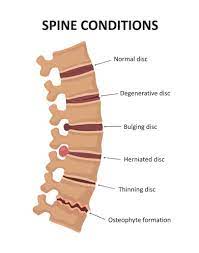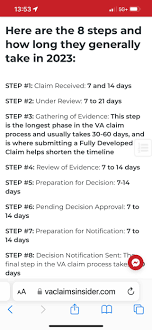VA Disability by MOS: Understanding Compensation for Service-Related Injuries
When it comes to serving in the military, each job specialty, or Military Occupational Specialty (MOS), carries its own unique set of responsibilities and risks. Unfortunately, injuries are an inherent part of military service, and they can have long-lasting effects on veterans’ lives. To address this, the Department of Veterans Affairs (VA) provides disability compensation to veterans based on their MOS and the service-related injuries they have sustained.
The VA disability compensation program aims to provide financial support to veterans who have incurred disabilities as a result of their military service. This compensation is intended to help veterans cope with the physical, mental, and emotional challenges that may arise from these injuries.
Understanding how VA disability claims work by MOS can be complex, but it is essential for veterans seeking compensation. The first step is to establish a direct connection between the veteran’s MOS and the specific injury or condition they are claiming. This requires proper documentation and medical evidence showing that the injury or condition occurred during active duty.
The VA uses a rating system ranging from 0% to 100% to determine the severity of a veteran’s disability. The percentage assigned directly affects the amount of monthly compensation received. It is important for veterans to gather all necessary medical records and supporting documentation when filing their claims.
Different MOS specialties may face different types of hazards or exposures during their service. For example, combat-related roles may have higher rates of physical injuries such as amputations or traumatic brain injuries (TBI). On the other hand, non-combat roles may be more prone to conditions like hearing loss or respiratory illnesses due to exposure to hazardous materials.
To ensure fair compensation, it is crucial for veterans to provide detailed information about their specific duties within their MOS and how those duties contributed to their injuries or conditions. This information helps VA officials better understand the impact of these disabilities on daily life activities and overall well-being.
It is worth noting that veterans can also claim secondary disabilities. These are conditions that may have developed as a result of a primary service-connected disability. For example, a veteran with a knee injury (primary disability) may develop depression (secondary disability) due to the limitations imposed by their physical condition. These secondary disabilities can also be eligible for compensation.
Navigating the VA disability system can be overwhelming, especially for veterans who are already dealing with the challenges of their injuries. Seeking assistance from accredited Veterans Service Organizations (VSOs) or legal professionals who specialize in VA claims can greatly improve the chances of a successful outcome.
In conclusion, VA disability compensation by MOS is designed to support veterans who have experienced service-related injuries or conditions during their military service. By understanding how to properly document and establish the connection between their MOS and disabilities, veterans can secure the compensation they deserve. Remember, seeking help from VSOs or legal professionals can provide valuable guidance throughout the claims process.
Frequently Asked Questions about VA Disability for Military Occupational Specialties (MOS)
- What are the easiest VA disabilities to get?
- What conditions automatically qualify you for VA disability?
- Can you go from 90% to 100 VA disability?
- What is the 5 year rule for VA disability?
What are the easiest VA disabilities to get?
It is important to approach the topic of VA disabilities with respect and understanding. The ease of obtaining a VA disability rating is not determined by the specific disability itself, but rather by the individual circumstances and evidence provided to support the claim. Each case is evaluated on its own merit, and the severity and impact of the disability on an individual’s life are key factors in determining eligibility for compensation.
While certain disabilities may be more common or have established criteria for compensation, it is essential to remember that every case is unique. Disabilities can vary widely, ranging from physical injuries to mental health conditions, and each requires appropriate medical documentation and evidence to support a successful claim.
The VA has established guidelines and rating criteria for different disabilities based on their impact on daily functioning. However, it is important not to focus solely on which disabilities may be perceived as “easier” to obtain compensation for. Instead, veterans should concentrate on thoroughly documenting their injuries or conditions and providing strong supporting evidence.
It is highly recommended that veterans seeking VA disability benefits consult with accredited Veterans Service Organizations (VSOs) or legal professionals who specialize in VA claims. These experts can provide guidance throughout the claims process and help ensure that all necessary documentation is gathered to support the claim effectively.
Remember, the goal of VA disability compensation is to provide support for veterans who have incurred service-related disabilities. It’s about receiving fair compensation based on the impact those disabilities have on an individual’s life, rather than focusing solely on which disabilities may be perceived as easier or more difficult to obtain compensation for.
What conditions automatically qualify you for VA disability?
The Department of Veterans Affairs (VA) has a list of conditions that may automatically qualify veterans for disability compensation. These conditions are known as “presumptive conditions” and are recognized as being directly linked to military service. Some examples include:
- Agent Orange-related conditions: Exposure to Agent Orange during the Vietnam War has been linked to various health issues, such as certain cancers, respiratory disorders, and diseases like diabetes and Parkinson’s disease.
- Gulf War Syndrome: Veterans who served in the Southwest Asia theater of operations during the Gulf War may be eligible for disability benefits if they have unexplained chronic multi-symptom illnesses.
- Prisoner of War (POW) status: Former POWs may qualify for compensation for any injury, illness, or disability that resulted from their captivity.
- Radiation-related illnesses: Veterans who participated in nuclear weapons tests, served in Hiroshima or Nagasaki following World War II, or were involved in certain radiation-related activities may be eligible for compensation if they develop specific cancers or other related conditions.
- Amyotrophic Lateral Sclerosis (ALS): Any veteran who develops ALS at any time after their military service is automatically eligible for VA disability benefits.
It’s important to note that while these conditions are considered presumptive, veterans still need to provide medical evidence supporting their diagnosis and a connection to their military service. Additionally, there may be other non-presumptive conditions that can also qualify for VA disability compensation based on individual circumstances and evidence provided.
If you believe you have a condition related to your military service, it is advisable to consult with a Veterans Service Organization (VSO) or seek legal assistance specializing in VA claims to help guide you through the process and ensure all necessary documentation is provided for your claim.
Can you go from 90% to 100 VA disability?
Yes, it is possible to increase your VA disability rating from 90% to 100%. The VA disability rating system is based on the severity of your service-connected disabilities, and ratings can be adjusted if there is evidence of worsening conditions or new disabilities.
To increase your rating, you will need to file for a reevaluation of your disabilities. This involves submitting new medical evidence that supports the increased severity of your conditions. It’s important to gather all relevant medical records, doctor’s opinions, and any other documentation that demonstrates the impact of your disabilities on your daily life activities.
You can initiate this process by filing a claim for an increased rating through the VA. It is recommended to seek assistance from accredited Veterans Service Organizations (VSOs) or legal professionals who specialize in VA claims. They can guide you through the process, help gather necessary evidence, and provide valuable advice.
The VA will review your claim and evaluate the new evidence provided. They may also schedule you for a Compensation & Pension (C&P) exam to assess the current state of your disabilities. Based on their findings, they will make a determination on whether to increase your disability rating.
It’s important to note that increasing your rating from 90% to 100% requires substantial evidence showing a significant worsening of your conditions or the addition of new service-connected disabilities. The process may take time, and it’s essential to be patient and persistent.
Remember, seeking assistance from VSOs or legal professionals experienced in VA claims can greatly improve your chances of success when seeking an increased disability rating.
What is the 5 year rule for VA disability?
The “5-year rule” refers to a regulation within the Department of Veterans Affairs (VA) disability compensation system. According to this rule, any disability that has been continuously rated at a certain level of severity for five years or more is considered “protected.”
Once a disability is protected, it becomes more challenging for the VA to reduce or terminate the veteran’s disability rating. However, it’s important to note that this rule does not guarantee permanent protection for all disabilities. In certain circumstances, the VA can still reevaluate and potentially adjust a veteran’s disability rating.
The purpose of the 5-year rule is to provide stability and security for veterans who have been living with service-connected disabilities for an extended period. It aims to ensure that veterans are not subject to frequent reevaluations and potential reductions in their disability benefits.
It’s important for veterans to understand that while the 5-year rule offers some protection, they should continue to comply with any requirements set by the VA, such as attending scheduled medical examinations or submitting requested documentation. Failure to do so may result in a reassessment of their disability rating.
If a veteran believes their disability rating has been unfairly reduced or terminated, they have the right to appeal the decision. Seeking assistance from accredited Veterans Service Organizations (VSOs) or legal professionals specializing in VA claims can provide valuable guidance throughout the appeals process.
Overall, while the 5-year rule provides some level of protection for veterans’ disability ratings, it is crucial for veterans to stay informed about their rights and responsibilities within the VA system and seek appropriate support when needed.



